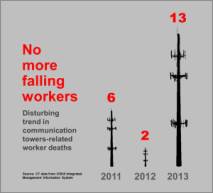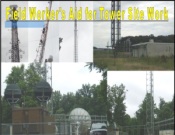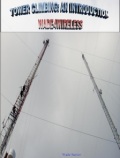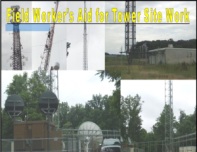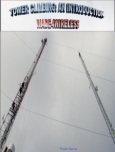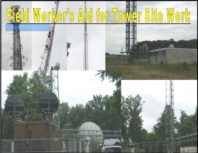Learn about Wireless Small Cells and CRAN.
This report is to help you understand more about small cell and CRAN deployments and all associated options. When you work in the wireless industry it’s hard to tell them apart. For instance, centralized RAN and Cloud RAN often looked at as small cells because a radio head is being deployed on a pole or building all by itself. It may look like a small cell, but it isn’t.
Learn about deploying CRAN, Mini Macro, and DAS along with small cells.
Another thing is the mini macro; it’s just a big and power small cell. It has the form factor of a small cell but can do more. Not quite as much as a macro site, but more than your typical 1-watt small cell.
Then there is DAS. DAS incorporates small cells, Wi-Fi, radio heads all into its system for the carriers. It could be one of these or all of these. DAS systems for 4G and 5G are going to be all digital.
It’s going to help you look at small cell deployment holistically. There are deployment notes, history, and an outline of what works and doesn’t work. This report covers more than small cells to give you a big picture of the future of wireless outside of the macro site.
Get the report!
- The paperback on Amazon found here, https://www.amazon.com/dp/1983252859
- The PDF, Sellfy, for PayPal, https://sellfy.com/p/JLUp/
- The PDF, Gumroad, Credit Card, https://gum.co/SmallCellsCRAN
Here is a taste of the table of contents:
- Small Cell History
- A quick History Lesson about Carrier Coverage
- The business of repeaters:
- The Business of DAS:
- The Birth of Small Cells
- What is a Small Cell?
- What do People call Small Cells, but they are not:
- Resources:
- Why (or why not) Install Small Cells?
- Deployment Options
- Indoors (Homes)
- Indoor (Business)
- Outdoors
- Design Flaws
- Small Cell Evolution
- Deployment models
- Top 5 Small Cell Deployment Hurdles
- Small Cell Development
- Cost of hardware:
- Installation:
- Integration:
- Leasing with Site Acquisition:
- Utilities: Power and Backhaul/Fronthaul
- What is a Mini Macro?
- Why Install Mini Macro Cells?
- The rise of CRAN and C-RAN/cRAN
- What is CRAN and cRAN/C-RAN?
- What is the difference between a small cell and CRAN?
- What are the advantages and disadvantages of small cells?
- What are the advantages and disadvantages of CRAN?
- How do I choose which to deploy?
- What about the cost and payback?
- CRAN systems and costs:
- Small Cell systems and costs:
- What’s the cost difference?
- Would you Deploy Small Cells or CRAN?
- What is CRAN and cRAN/C-RAN?
- Would you deploy DAS or Small Cells?
- Do you need to choose?
- Will DAS and Small Cells Work Together?
- DAS and CRAN
- What G makes sense for small cells?
- 2G? Are you kidding me?
- 3G was not hot either.
- 4G and LTE make Sense.
- And now, 5G!
- Small Cell Opportunities
- Overview by Market:
- Enterprise:
- Indoor:
- Outdoor:
- The real winners:
- Overview by Market:
- Why not just put in more macro sites?
- What about the Massive MIMO Macro?
- How will 5G that change the small cell model?
- Extreme Broadband
- Ultra-Reliable Low Latency
- Massive IOT Connectivity
- Outdoor small cell vendors:
- Increase Small Cell Value
- Will Small Cells work with IOT and become the FOG edge?
- Could a small server be put in small cells to control IOT and act as a FOG server?
- Could IOT feed small cell growth?
- Make small cells part of the 5G solution.
- It’s all about the Value!
- Small Cell Installation Checklist
- Quick, high-level checklist:
- Question Checklist:
- Site Acquisition Checklists
- Use Small Cells to Build a Private LTE Network
- Build your own Private LTE Network
- Why Private LTE?
- Why would I want a private LTE system?
- What is the CBRS?
- CBRS and the Shift in Spectrum Ownership
- Your Private LTE Network
- Small Cells in LAA, CBRS, LTE-U are 5G Building Blocks!
- Carrier Aggregation and Private LTE
- LAA – Licensed Assisted Access
- CBRS – Citizen’s Broadband Radio System
- Carrier Aggregation made this possible!
- What about the devices?
- How can this help you?
- Indoor Coverage Matters!
- How will we cover inside?
- Wi-Fi
- LTE-U
- DAS systems
- CBRS
- Inside coverage summary
- The Common Carrier Small Cell
- Mounting Small Cells in the City
- City Deployment Notes
- Expense Reduction:
- Now, let’s look at ways to make money of existing city asset.
- City Asset Audits
- What assets can we mount in a city?
- Acronyms and Definitions
- City Deployment Notes
- Build your own Private LTE Network
Get the report!
- The paperback on Amazon found here, https://www.amazon.com/dp/1983252859
- The PDF, Sellfy, for PayPal, https://sellfy.com/p/JLUp/
- The PDF, Gumroad, Credit Card, https://gum.co/SmallCellsCRAN
Be smart, be safe, and pay attention to learn!
More products from TechFecta and Wade4Wireless:
The foundations below do beautiful work, helping families in their time of need. Climbers often get seriously injured or die on the job. The foundations below support those families in their time of greatest need!


































